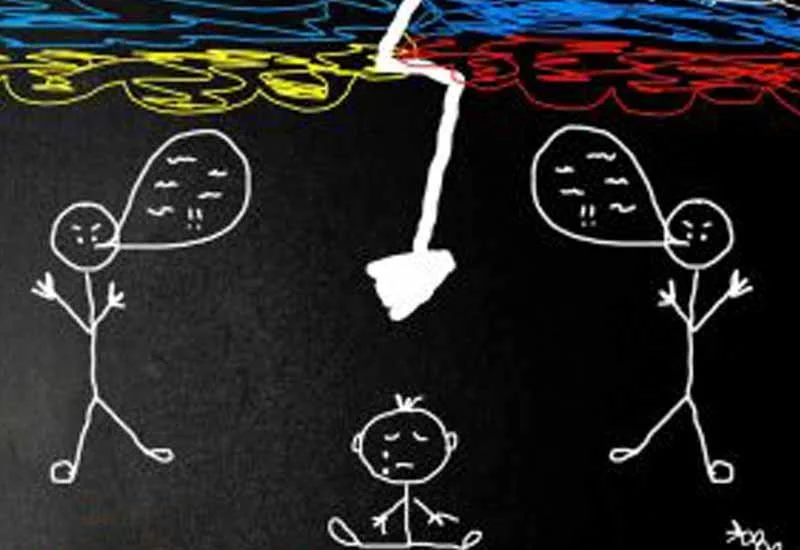How to Talk to Children About the War in Ukraine
Here are 7 tips for easing worries.
Posted March 25, 2022
Key Points
Children derive their sense of safety from the adults around them.
Young people take cues from adults, reading their expressions and emotions.
Hearing the truth from a trusted adult can be reassuring.
Children will benefit from seeing parents demonstrate caring for people under duress.
The photograph on the front page of my newspaper shows a Ukrainian mother, her two children, and a family friend lying motionless in the street, wearing backpacks, a rolling suitcase beside them. They had been seeking safety from the fighting when a Russian mortar ended their lives.
Pictures of death and fear from the war in Ukraine are everywhere, and so are images of bravery, patriotism, and the generosity of strangers. Our children see these images. They hear the news. Now many are rightly asking: Will this war come to us? Will we be safe?
A sense of safety

Children derive their sense of safety from the adults around them. And they need to feel safe to be able to pay attention to their schoolwork, to the activities and people they love, and to eat and sleep well.
Sadly, our sense of safety and stability has already been challenged in unprecedented ways over the past two years. Many of us are worn out by it all. Our emotional states are like embers—it doesn’t take much these days to trigger them into yet another emotional fire.
Keep in mind that children may be overhearing that Russian President Vladimir Putin is threatening to use nuclear weapons or that this could be the beginning of World War III. They may be wondering if their own family members who are in the military will be sent to fight. They may be worried about Ukrainian relatives in harm’s way. Or about the safety of Ukrainian President Volodymyr Zelenskyy and his family. Some might ask, why should we care about a war taking place in another country?
Reassuring children

You can reassure children by telling them that leaders across the world are working to find ways to end this war as soon as possible and that President Joseph Biden has promised not to send troops into this battle. You can say that no one wants another world war or nuclear war, but that many believe we must stand up for freedom and self-determination. You might add that the Ukrainians are standing up for their country, their culture, and their language. They don’t want to give up their identity to Russia and fall behind the Iron Curtain again.
Why should we care about the war in Ukraine?
The truth is that all of us care about actions that are unjust, unfair, and cruel, whether it is Russia’s unprovoked invasion of Ukraine or the murder of George Floyd. The context may be vastly different, but in both cases, humanity and justice are at stake.
7 tips for talking to children about the war in Ukraine:
In these circumstances, how should we talk to children about the war in Ukraine? What can we do to ease their worries?
- Prepare yourself: Young people take cues from the adults around them, reading their expressions and emotions. Before you talk to a child or teenager, think about what you want to say and how you want to say it. Consider taking out a map to help make sense of where the war is taking place and where families are seeking refuge. Most of all, be truthful and be authentic.
- Bring it up: Initiate conversations about the war with your children. Avoiding the topic may make the conflict seem even more dangerous to them. Chances are, they are getting information about the war someplace—perhaps on TikTok or Instagram or YouTube—and much of that information may be from unreliable sources.
- Give them the facts: Hearing the truth about what is going on from someone they trust can be reassuring and may be very different from what they’re hearing on their smartphones, from their peers, or from the media. It could also be a chance to learn and talk about Soviet, Russian, and Ukrainian history together.
- Avoid racial and cultural stereotypes: This is an opportunity to communicate that aggression against others for reasons of race, culture, and individual power is wrong wherever it occurs, and standing up against it in the ways each of us can is important.
- Limit media exposure: Regulate children’s exposure to some of the scary things that are being communicated via all types of media without enough context.
- Model compassion: Children will benefit from seeing parents demonstrate caring for people under duress. One way to do that is for families to take action by supporting reputable organizations such as the International Rescue Committee, Razom for Ukraine, Save the Children, or CARE.
- Communicate regularly: Provide ongoing opportunities for questions, and don’t be surprised if you hear ones you’ve answered before. Answer them patiently.
Personal perspective:
After the collapse of the Soviet Union in 1991, I went to work in Eastern Europe to help revitalize their health and mental health care systems through the development of NGOs dedicated to children’s well-being. There was a belief that families having access to health care and education would be vital to the success of emerging democracies. I witnessed firsthand what freedom meant to people who had lived under Soviet rule. They know what losing freedom might mean, and they will not give it up without a ferocious defense, not today, not ever.
Read the article on Psychology Today.


